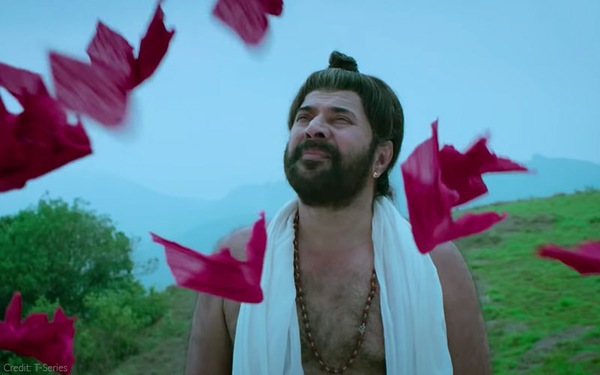Mamangam: An Underrated Period Film That Asks An Uncomfortable Question

- Parvati Mohan
Film Companion
Last Updated: 11.06 AM, Jul 05, 2021

I have loved history ever since our third-grade social studies teacher taught that first chapter on early humans. Because of this love, I enjoy period films. Often, even if I dislike the film’s handling of the content, I will still enjoy just looking at the sets and costumes.
Though I am a Malayali, by virtue of attending a CBSE school in Hyderabad, I did not learn any Kerala history growing up. I only knew about north Indian kingdoms, which meant that I went around saying that Asoka and Akbar were my favourite kings. This could be a reason that I found Mamangam refreshing. The film brings to life aspects of Kerala’s culture that are not known to many non-Malayalis. The buildings in it are reminiscent of the elegance of the Padmanabhapuram Palace, and are nothing like the Delhi durbars I had seen in Hindi movies growing up. A wall in a brothel is adorned with beautiful mural paintings. The women wear palakya and nagapadam jewellery, and houses are adorned with brass vilakkus (lamps).
The context is that in medieval Kerala, the Valluvakonathiri of Valluvanad would send warriors (chavers) to defend his honour at Mamangam, a festival that took place once in 12 years. The chavers challenged the mighty Kozhikode Samoothiri’s title of Great Protector of Valluvanad on behalf of the Valluvakonathiri. A handful of chavers would face the mighty guard of the Samoothiri, and so, realistically, stood no chance of even touching him. Everyone involved knew that it was a suicide mission.
Some cinematic license is taken here. Mamangam shows us two celebrations of the eponymous festival, set twenty-four years apart. During each, one chaver manages to fly past several hurdles and reach the Samoothiri. But he is unable to kill him at either time. A typical period film would have shown us a hero who would have triumphed against all these odds. Despite having a superstar like Mammootty play the protagonist, Mamangam steers clear of that path.
What it does instead of glorifying blind loyalty to authority is to question an exploitative practice that served no real purpose. In Chandroth Valiya Panicker, we have a protagonist who realises the futility of the life of a chaver. He fought as one in a Mamangam, survived to tell the tale, and lived long enough to endure the burden of wisdom—it is better to live an ordinary life as a householder than to give it all up for the whims of a distant king.
Even though the film is about a small kingdom in a small part of the world, the question is universally applicable. What is the worth of the life of a soldier? Whose battle is he fighting, and is it worth giving up his life for? The point is further driven by the fact that the latest casualty is only twelve years old, a child who bought into the narrative of the valour of a chaver and his duty as a member of the Chandroth family to fight for the Valluvakonathiri.
According to its Wikipedia page, Mamangam qualifies as a box-office hit—it crossed the 100-crore mark. Yet I feel that it doesn’t get the credit it deserves for daring to go in the opposite direction of most period films. When the story closes, we don’t see a triumphant hero with a grin on his face and his fist is in the air, or even a defeated hero whom history remembers kindly and celebrates. What we have is an ageing, dejected man with nothing to look forward to, riding into a bleak sunset; no statues are going to rise in his honour. For a mainstream film, that is, without doubt, pathbreaking.

